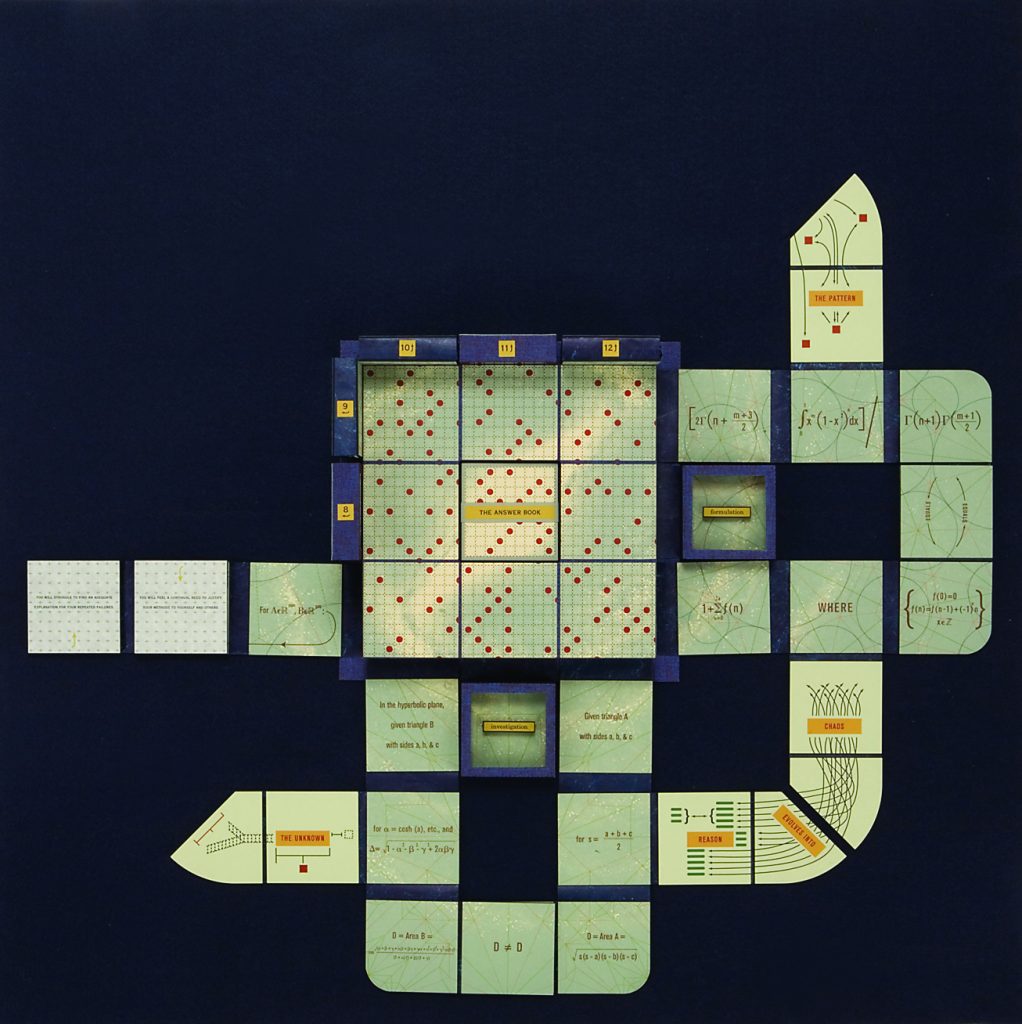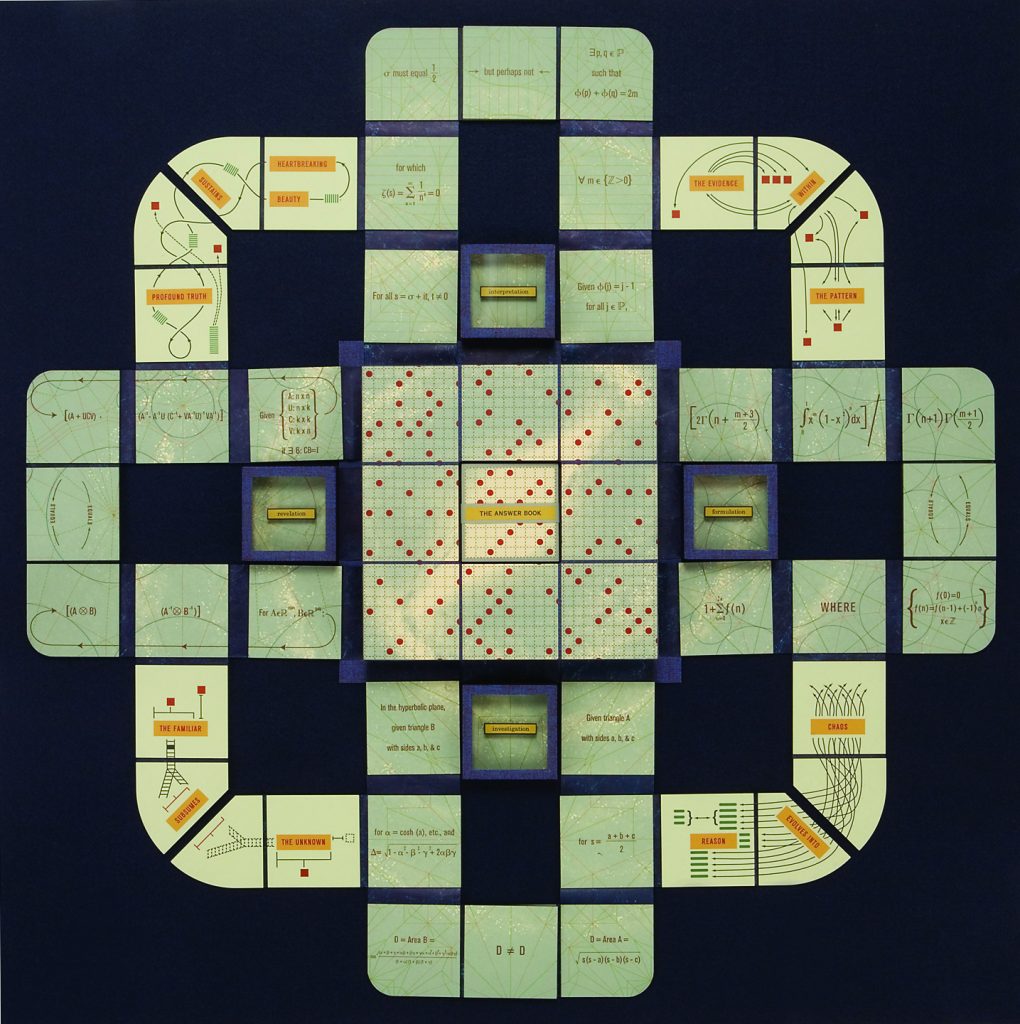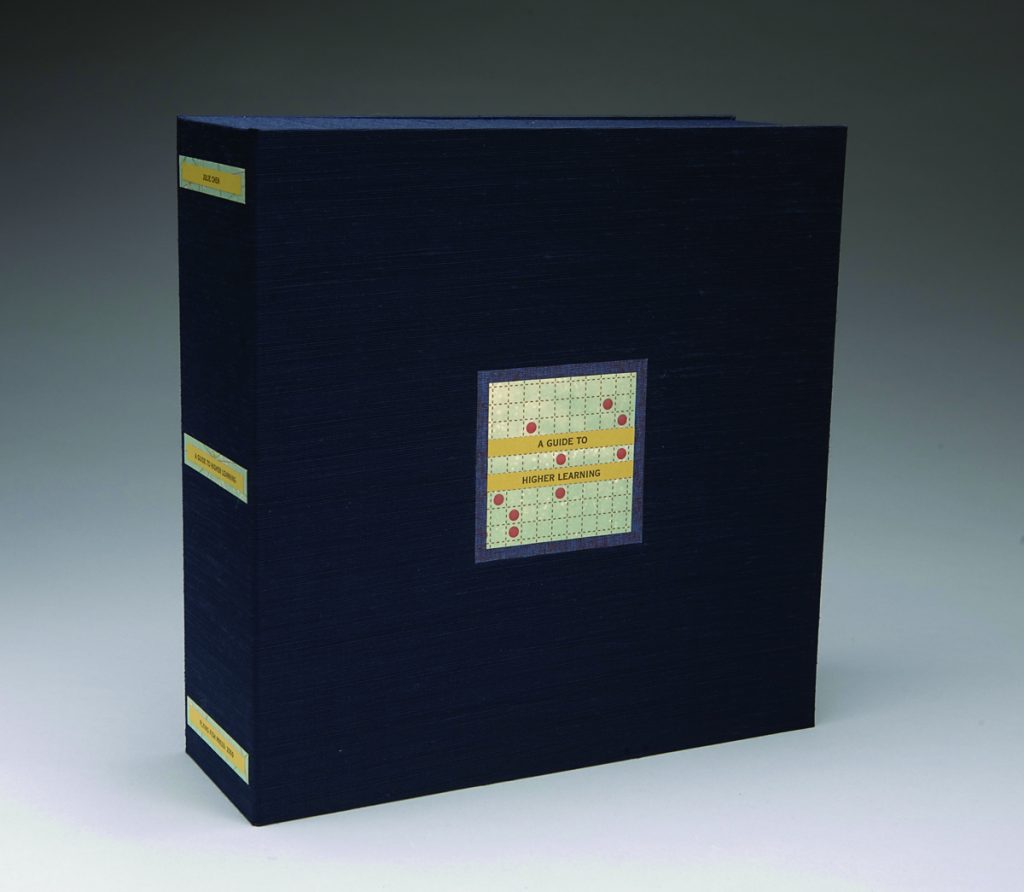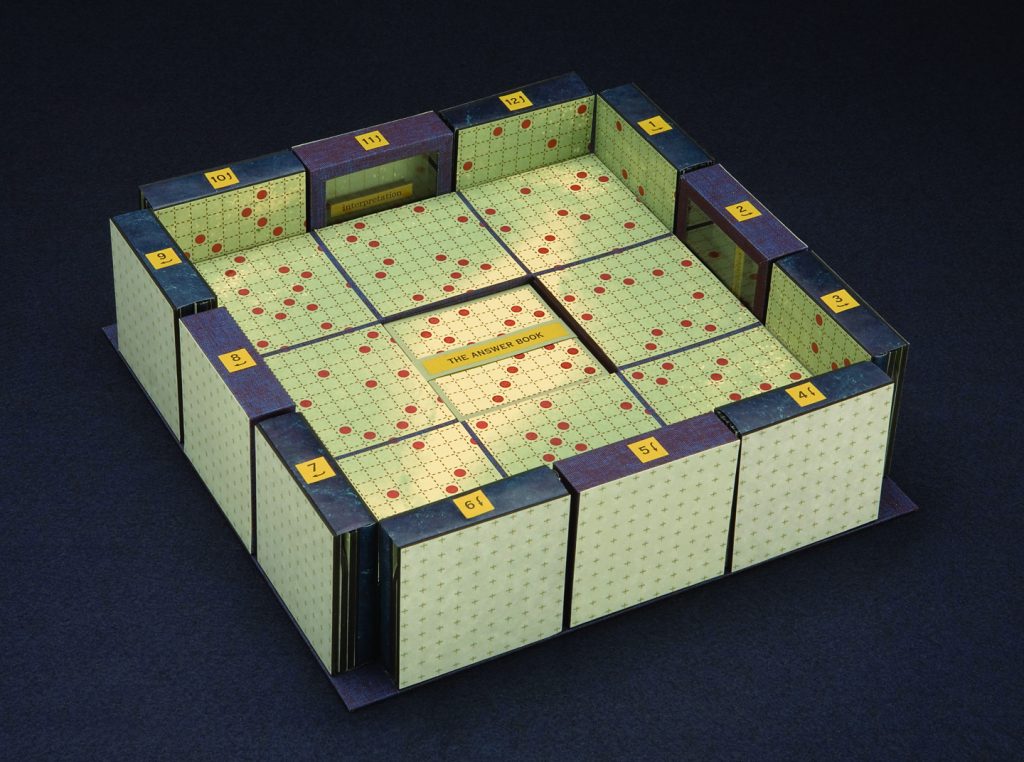
Detail of opening of first sections.
 Detail of book partially opened.
Detail of book partially opened.
 Detail of book completely opened.
Detail of book completely opened.
Julie Chen
Berkeley, California
http://www.ingebruggeman.com
A Guide to Higher Learning
2011
Letterpress using photopolymer plates on various papers, museum board, plexiglass, tyvek
edition size of 100
Open: book is 31″ x 31″ and is laid out on a cloth that is 34″ x 34″
Closed: box is 11.75 ” x 11.75 ” x 3.75 “; book is 11″ x 11″ x 3.125”
Artist Statement
My approach to the artist’s book involves intensive explorations of both form and content. My work is heavily rooted in the ideas of the book as a physical object and a time-based medium. I view reading as an intimate act in which the reader must be in close physical proximity to the book, can control the pace of reading through the self-directed turning of pages, or equivalent action, and must interact with the book through the manipulation of the book’s physical structure. I strive to present the reader/viewer with an object that challenges preconceived ideas of what a book is, while at the same time providing a deeply engaging and meaningful experience through the presentation of my own text and imagery in a purposefully structured format. Often the reader must engage in unexpected physical actions such as the unfolding or sliding of pages, the turning of a wheel, or the tilting of a box in order to fully read/view a piece.
The idea of giving order to personal experience through the use of mapping, charting, and numbering is an important underlying theme that runs through much of my work. These systems of organization allow me to present content in ways that can be understood and translated through the reader’s own life experience. An essential part of my creative process involves a deep investigation of my understanding of and response to a chosen topic or concept through a combination of research, personal observation and inquiry, and intensive exploration in the studio of various ways to express my ideas through writing and image-making in purposeful combination with the physical form of the book. Enclosures such as boxes, along with the corresponding concept of creating a fully self-contained world within the piece, also play a major role in the presentation of my bookworks.
I use the crafts of letterpress printing and hand bookbinding, combined with more modern technologies such as photopolymer plates and laser cutting, to create work that is often designed digitally, but produced with an intense attention to the materiality of the resulting piece. For me, the physical manifestation of the book is often of equal importance to the visual and textual ideas expressed within the pages in conveying meaning and in affecting the experience of the reader/viewer. This experience begins with the initial perception of the container for a piece, and continues through the process of reading/viewing and through the manipulation of the piece’s structure and materials. My personal definition of the book is quite broad, with boundaries that are in constant flux. At the core of my interpretation is the act of reading, and the element of time that is essential to this act.
A Guide to Higher Learning
A Guide To Higher Learning examines the experiential process of acquiring knowledge, on both academic and personal levels. The piece is comprised of 8 sections of rigid square pages that are hinged together in unexpected ways, giving the reader a physical reading experience that mirrors the complex meaning of the content.
As the text is read, the panels are rolled over thus revealing layers of visual information including complex mathematical equations, origami crease fold patterns, and an image of the shape of the galaxy. The panels themselves are organized to fold out into a large geometric pattern of squares during the reading process. The experience for the reader is one that begins with a clear and guided written narrative, and ends with a beautiful and mysterious visual display.



